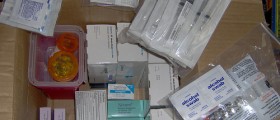
Irregularitiesand implications
Oncethe existence of heart murmur in a child has been determined and the diagnosis set, a completely appropriate response is overt concern. This heart relatedirregularity represents a noise, which is produced by the blood while flowingthrough the heart. Some even compare it to the water coming from the faucet. Givenhow sensitive babies are, the bodies which are still in the phase ofdevelopment are highly prone and vulnerable to the above mentionedirregularity. What quite a number of parents is perhaps not aware of is thatthis irregularity is far more common than thought of. Namely, numerous newbornsare diagnosed with heart murmur, but fortunately, these do not exude any overtnegative influence on their overall health, nor life in general. But, thiscannot be said for all the cases, unfortunately. There are cases in whichbabies are diagnosed with what is referred to as either the abnormal ornon-innocent murmurs. These in turn do require immediate reaction and medicalattention and treatment, which will last for longer period of times. What allexperts from this field constantly warn about is the importance of timelydiscovery of these irregularities so they could be treated properly and withoutany life threatening consequences.
Giventhe fact that timely discovery is essential in case of heart murmurs,parents should always be on the lookout for the following signs – shortness ofbreath, pain in the chest, tremors, dizziness, lung congestion, bluish lips andoccurrence of swellings primarily affecting extremities of the baby.
Culprits
Whenit comes to the most to be blamed for causers, these include such as:
Congenital defects of the heart, which manifest themselves as irregularities in the structure of the baby’sheart, such as holes in the heart walls (of varying seriousness determined bythe location and the size), shunts appearing in the areas of abnormal flow ofblood between heart chambers, as well as blood vessels.Heart valve defects, which might occur oncethe baby is born, or may also present themselves in later phases of a child’s life. Theimmediate danger lies in the fact that these irregularities have the tendencyto hinder the movement of blood through them, or due to improper closing theytend to leak.Asmuch as 85% of babies tend to show signs of murmurs in the course of the first24h after being born and these go away in the next 48h or so. But, children whoare older can also suffer from murmurs. Some of the children whose chest wallsare thinner tend to exhibit the murmurs in much louder manner, and it is this variety that goes by the name of innocentmurmurs. They are not initiated by specific heart irregularities and are not theones that the parents should be overly concerned about. In addition, certain murmurs arealso known to be brought about by stress, fear, fever or anemia.
















Your thoughts on this
Loading...